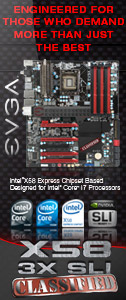« Previous Page | 1 2 3 4 5 - View All | Next Page »
You might be wondering why this article is called a “Test Drive” instead of a review. Quite simply put this is because we do not have the load testers and oscilloscope needed to test under extreme conditions. We have learned through some research that the original Toughpower series power supplies had voltage ripple issues, but these issues seem to have been addressed with the new XT line that we are looking at today. Other reviews around the internet confirm the improvements using the equipment needed to fully test those functions. Confident in the results published by those with the high end testing equipment, we will test the unit by putting it under as much system load as possible and view the voltage readings through a digital voltage meeter, the ambient temperature was 72° F (22°C). We overclocked a i3-540 (3.06 GHz Stock) processor to 4.07 GHz and checked the voltages while in the BIOS screen.
The Toughpower XT seems to have no problem providing strong voltage outputs for the +12v and +5v at this point.
Next we booted to the desktop and took another reading while sitting idle on the desktop, the readings were the same as what we viewed while monitoring from BIOS. We moved ahead and started a LinX stress test and ran that for 30 minutes before taking the readings, which allowed the unit to reach it’s full operating temperature relevant to the load we put on it.

Again the Thermaltake Toughpower XT 775 watt power supply handled this load with ease showing only a drop of .01v on each rail from idle readings
So, what do these test results mean? By no means, given our test method, do these results show what the power supply is capable of at 100% load on each rail. We’ll leave those test results to the ones with the proper equipment to provide them. What these results do show is that this power supply can easily handle a higher end system overclocked quite substantially, and provide strong voltage to the +12v and +5v while doing so. Our test system consisted of a HD3870 Crossfire setup, a couple of hard drives, optical drive, and 4 Gb of memory, no slouch of a system obviously.







